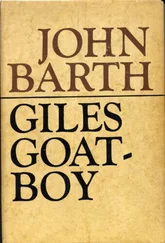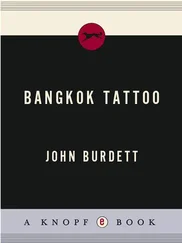A dozen-plus centuries later, at about the same time that the great Persian Anonymous was setting down the story of the story of Scheherezade’s stories, his or her fellow pre-Postmodernist Dante Alighieri, in exile from Florence, ratcheted up his countryman Horace’s advice by beginning his divinely comic epic not only in the middle of its narrator’s story instead of “In the beginning,” but with the very words Nel mezzo . “In the middle of our life’s road, I found myself lost in a Dark Wood”: a quietly bravura overture to a work whose form throughout will figure its three-in-one, unity-of-the-Trinity content, from the traditional division of the Hereafter into Hell, Purgatory, and Heaven, through the allotment of (on average) 33 1/3 cantos to each of those departments, to the interlocking three-line stanzas’ terza rima versification. Three cheers, maestro!
Tough acts to follow. But a mere six centuries later, James Joyce completes the movement from Genesis’s “In the beginning” through Dante’s “In the middle” by beginning his dream-epic Finnegans Wake not with “The end” but with “riverrun, past Eve and Adam’s, from swerve of shore to bend of bay, brings us by a commodius vicus of recirculation back to Howth Castle and Environs”—which odd, lower-case opener (so we learn 627 dream-dark pages later, unless we’d heard the news already) is the completion of that cyclical opus’s unfinished closing sentence. In short, the author begins his story literally in the middle of its ending: a triple play at which Dante might have nodded approval, unless he’d nodded off. As a graduate student in the 1950s, I proposed in a Joyce seminar that the appropriate print-vehicle for Finnegans Wake would be not a conventionally bound book, but either a very long roller-towel or unnumbered pages fanning out from a central spindle, so that Beginning and Ending would literally conjoin.
Time was (excuse the expression) when some late-arriving epigones of the great Modernists did indeed chafe at what they felt to be the passé bonds of conventional print technology and experimented with alternatives, not necessarily to the print-medium itself, but to its customary modes of presentation: One thinks of Marc Saporta’s 1962 novel-in-a-box Composition 1 , its unnumbered and unbound pages packaged in any random “order” and thus sans any fixed opening sentence at all, or any other authorially-determined beginning, middle, or ending; likewise Daniel Spoerri’s unpaginated Anecdoted Typography of Chance , from 1966. That rebellious, “countercultural” decade was particularly rich (if that’s the right adjective) in this sort of post-Dadaist, pre-computer-era experimentation: Apprentice writing-workshoppers back then came up with such alternatives to conventional tale-telling as, e.g., a short story called “Serial,” its several sentences typed on separate paper strips like extended fortune-cookie fortunes, shaken up in an appropriately refigured “cereal” box and dumped into a bowl, to be fished out and read in random order, any one of them potentially the story’s opening sentence. After two or three such “serial” readings, one pieced together the tale’s simple plot; its suspense then became not “What happened?” but “In what order will its component actions be recounted this time around?” And it worked, sort of, to hear a line like “Three months later they found what remained of Lizzie in the marsh” now as the story’s opening, now as its ending, now as one mid-course complication — a bit like reassembling a familiar jigsaw puzzle or reconstructing a fossil skeleton from its scattered bones. One remembers too Spencer Holst’s “Pleasures of the Imagination: 64 Beginnings,” comprising just that: 64 more or less arresting openers like “The obese puppeteer washed the dishes in the dark,” with no stories attached.
The advent of word processors, “hypertext,” online interactive fiction, and even an Electronic Literature Organization may make such Marshall McLuhan-era innovations seem as quaint as tail-finned autos. But it may also remind us (if we need reminding) that the mature and stable technology of the printed book, like the narrative/ dramatical conventions of Beginning, Middle, and Ending — older than print, older even than writing — can be jiggered and redeployed to memorable effect as long as homo sapiens still savors the eminently human pleasure of hearing and recounting tales. As Donald Barthelme liked to say (and as I’m fond of repeating), the important question about a story isn’t whether it’s realistic or irrealistic, traditionalist or “experimental,” pre- or post-Modern: The important question is “Does it knock your socks off?”
To which one might add that a real socks-knocker of a story may have a deliberately low-keyed opening (“Call me Ishmael”), just as a first-rate movie may start with nothing more “dramatic” than a man shaving or a woman pouring the breakfast coffee. Contrariwise, a lapel-grabbing opening shot or sentence — car chase, pistol fired as if at viewer, string of Boldface all-caps obscenities! — may open an eminently forgettable yarn. The wannabe novelist Joseph Grand in Albert Camus’ The Plague tinkers endlessly with his manuscript’s first sentence (“ One fine morning in the month of May, an elegant young woman might have been seen riding a handsome sorrel mare along the flowery avenues of the Bois de Boulogne ,” among numerous other versions) in a vain effort to get it so exactly right that any editor must cry “Hats off!”—while Camus’s chef d’oeuvre itself opens with the simple declaration that “The unusual events described in this chronicle occurred in 194_ at Oran.”
Do I have your attention, Reader? On with the story, then….
In 2009, at the invitation of Penguin Books, I revisited my longtime narrative navigation star Scheherazade by writing the following introduction to their new Signet Classics edition of The Arabian Nights, Volume II , published in 2010.
DAVID BEAUMONT’S MASTERFUL Introduction to Volume I of the two-volume Signet Classics edition of The Arabian Nights opens in true Scheherazadean style: “The story of the book called The Arabian Nights , it has been said, is a story worthy of being in The Arabian Nights .”
To that introduction-to-an-introduction, your present introducer of Volume II — no scholarly authority like Professors Beaumont and Jack Zipes (whose Afterwords to both volumes are likewise excellent), but a longtime yarn-spinning fan of Ms. Scheherazade — cannot resist adding that “the story of the book called The Arabian Nights ” in fact is in The Arabian Nights , or anyhow just outside it. It’s the frame that frames the frame, so to speak.
I mean this literally. The stories, stories-within-stories, and stories-within-stories-within-stories that comprise the Kitab Alf Laylah Wa Laylah , or, as it’s variously called, “The Book of a Thousand Nights and a Night” or “The Arabian Nights Entertainment,” are from all over the Indian/Persian/Arabic map. Over the centuries, like old-time merchant-traders traveling the Silk Road and adding to their stash of goods along the way, the book’s innumerable compilers picked up yarns from here and there and stitched them into their narrative quilt. And they’re famously framed by the best story of them all: the story of their teller, the courageous, canny, beautiful, and learned young daughter of the king’s Grand Vizier — a monarch so murderously deranged by his wife’s infidelities that after executing her he “marries” a virgin every night and has her killed in the morning before she too can cuckold him. For the story of that story, see Beaumont’s preface to Volume I — and then read the opening story in that volume, “The Story of King Shahryar and His Brother,” which explains why and under what circumstances Scheherazade will spin out, by my count, no fewer than 169 “primary” tales, at least 19 of which contain tales-within-the-tale: 87 “secondary tales” in all, at least four of which contain tertiary tales-within-the-tale-within-the-tale, for a total of some 267 complete stories, plus about ten thousand lines of verse in Sir Richard Burton’s original unexpurgated ten-volume translation of the Nights (1885–1886), of which the present version is an artful two-volume abridgment. And that’s before we even get to the seven volumes of Burton’s later Supplemental Nights .
Читать дальше












